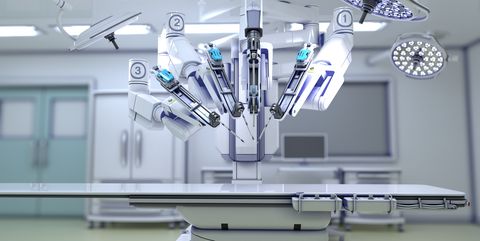You’re enjoying a nice evening playing soccer with your friends. You accidentally slip and fall on your right side. You have terrible pain in your chest, so your friends rush you to the hospital to get it checked out. After hours of waiting in the emergency room, the doctor decides to operate you tomorrow – his diagnosis: two broken ribs. He asks you to sleep the night in the hospital so the nurses can observe you.
Apart from the pain, you have problems sleeping that night as your mind keeps on thinking of the possible scenarios that could go wrong during the operation. Is the doctor going to be concentrated? Will he have a bad day? Is he experienced enough? So many thoughts go through your mind while you slowly doze off.
…
You dream about the surgery. You see the scalpel opening the right side and slowly cutting through the tissues of your skin. For the first time you see a human body’s intestines, and you also recognize something pumping – it’s your heart…bump bump… You see the doctor attaches the metal to the ribs and stitch up your skin.
You wonder how smooth this operation went. Clear cuts, precise attachments, and not a single error.
You look up and want to thank the doctor for his great work. As you look up you only see machines around you. Not a single human body – neither a nurse, an assistant surgeon nor the doctor. You see the scalpel and all the other tools attached to a robotic arm. You are in a panic, shouting for someone. You try to stand up, and this terrible pain comes back to your chest again.
…
Your alarm wakes you up and you notice it was only a dream. You slept for only three hours but you’re not tired at all. You try to remember the dream as the nurse enters the room. She asks you how you feel, and you answer with a simple – Good.
Are we using robots in surgery rooms?
Robotic technology has already been adopted rapidly over the past years in both the U.S and Europe (Barbash, 2010). Unlike industrial robots, medical robots make use of patient-specific data and general medical knowledge and present this information to the doctor (Enayati, De Momi, & Ferrigno, 2016). Another method is where the doctor sits down at a terminal and supervises robotically assisted telesurgery via skype on patients who are distantly located (Choi, Oskouian, & Tubbs, 2018)
According to UC Health, robotic surgeries offer many benefits to the patients such as shorter hospitalization, reduced pain, and reduced blood loss. Robots assist surgeons with visualizations, enhanced dexterity and greater precision. So Yes, robots are already widely adopted as assistive tools for medical professionals.
Would you want to be operated by a robot? Should there be a line for robotic adoption in surgery rooms? Are medical professionals going to be obsolete in the future? Are medical errors still possible with the complete adoption of robots? What are the ethical boundaries with a complete adoption?
Sources:
Barbash, G. I. (2010). New technology and health care costs–the case of robot-assisted surgery. The New England journal of medicine, 363(8), 701.
Choi, P. J., Oskouian, R. J., & Tubbs, R. S. (2018). Telesurgery: Past, Present, and Future. Cureus.
Enayati, N., De Momi, E., & Ferrigno, G. (2016). Haptics in robot-assisted surgery: Challenges and benefits. IEEE reviews in biomedical engineering, 9, 49-65.
UC Health. (N.d). Robotic Surgery Program. Retrieved from USHealth.com: https://www.uchealth.com/services/robotic-surgery/patient-information/benefits/

